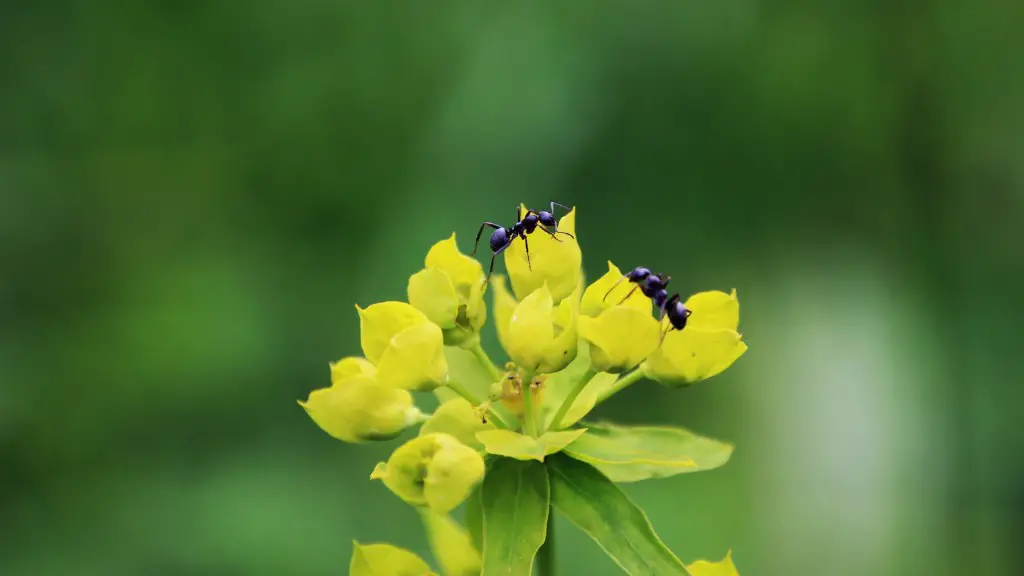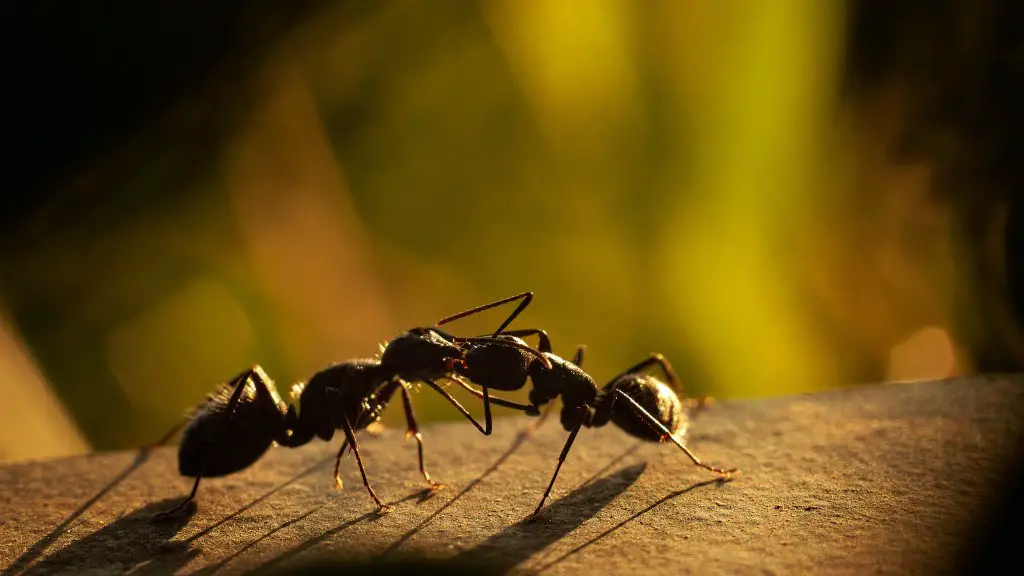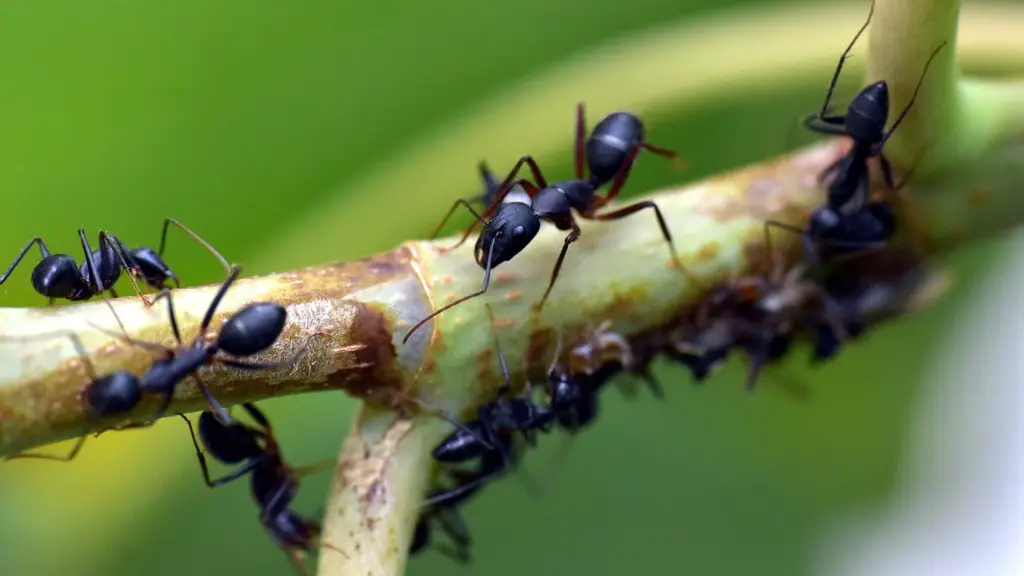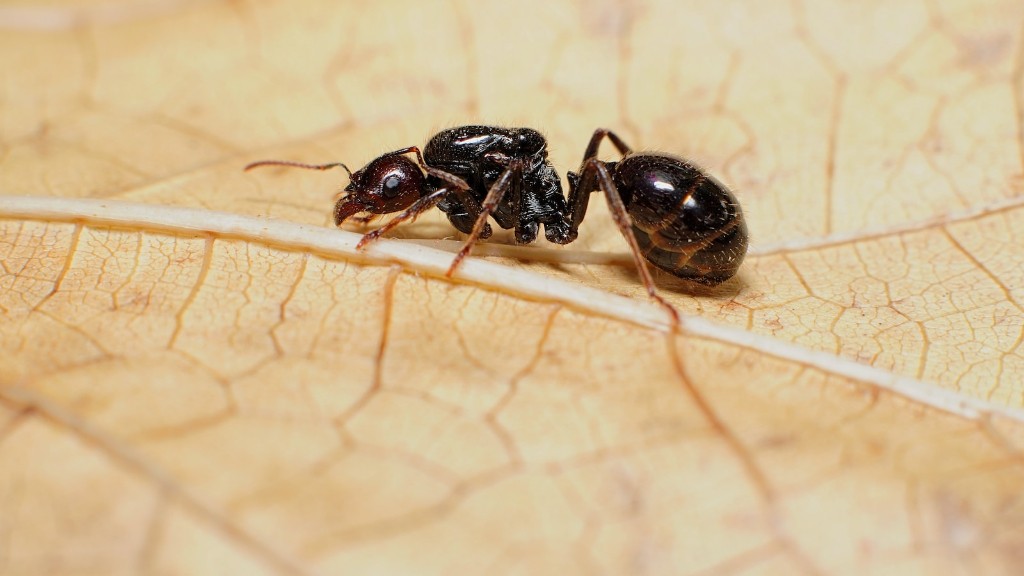Overview
The bullet ant (Paraponera clavata) is a species of ant native to humid tropical rainforests in Central and South America. It has acquired a number of names over the years, including “the 24-hour ant,” “the warrior ant” or “the conga ant” due to its fierce nature. As its name implies, bullet ants have a venomous sting that is similar to the feeling of being shot with a bullet, hence their name. They are one of the largest ant species, measuring up to 2 inches (5 cm) in length. Bullet ants live in colonies of up to 500,000 workers and a single queen.
Habitat and Diet
Bullet ants are usually found in the tropical rainforests of countries such as Nicaragua, Panama and Costa Rica, but they can also be found in the highlands of Peru, Colombia, Paraguay, and Brazil. They prefer habitats that are warm and humid and can be found in leaf litter or deep in the soil. Bullet ants are omnivores and their diet includes both plants and animals. They feed on the honeydew produced by leaf-cutting ants, as well as insects, spiders, flowers and fruits.
Behavior and Social Structure
Bullet ants are usually very aggressive in nature and will attack anything that approaches them in defense of their colony. In addition to their venomous sting, they also possess powerful mandibles which they use to bite their victims. Bullet ants live in large colonies consisting of up to 500,000 workers and a single queen. They mainly tunnel through the soil, but they will occasionally construct nests in trees or shrubs.
Predators and Defense Strategies
Bullet ants face a range of predators ranging in size from large birds and mammals to small invertebrates. They have a variety of defense strategies for protecting themselves from these predators. Their powerful sting is their first line of defense, allowing them to fend off most predators. If this fails, they will attempt to flee or use their mandibles to bite their attackers.
Life Cycle and Reproduction
Bullet ants undergo an annual cycle of reproduction. In the spring the queen lays eggs, which hatch into larvae. The larvae then molt into pupae, and finally into adult ants. The males are short-lived and die shortly after mating with the queen. The worker ants are all female and they are responsible for feeding the young and protecting the colony.
Cultural Significance
The bullet ant has been associated with various cultural practices in Central and South American societies. It is used in a number of initiation rituals, such as the coming-of-age ceremonies of some Amazonian tribes. In these ceremonies, young boys are required to wear gloves filled with bullet ants as part of their initiation. The bullet ant has also been used in religious rituals and shamanic practices.
Toxicity and Medical Uses
The venom of the bullet ant is known to be extremely powerful and is said to be as potent as that of a bee or wasp. The venom is composed of various toxins, including histamine, serotonin and formic acid, which all contribute to the intense pain it causes upon injection. Despite this, medicinal uses of the toxin have been explored, such as its potential use in pain relief.
Interactions with Humans
Bullet ants are generally regarded as a dangerous species and encounters with humans should be avoided. Their venomous sting is extremely painful and, in rare cases, can cause anaphylactic shock. Despite this, the bullet ant is of great importance in some cultures and is often revered for its strength, resilience and violent nature.
Conservation Status
At present, the bullet ant has yet to be classified by the IUCN. However, due to the destruction of its natural habitat and the potential of it being overhunted for medicinal purposes, it is likely that the bullet ant will be listed as a threatened species in the near future.
Impacts of Climate Change
Climate change is having a direct and negative impact on the bullet ant. The warming of temperatures and extreme weather events are causing the rainforests of Central and South America to suffer, with this in turn leading to a decrease in the bullet ant’s population. In addition, climate change is also causing shifts in the distribution of the bullet ant, leading to further disruptions to its population.
Threats to the Species
The main threats to the bullet ant are habitat destruction and overharvesting. The destruction of tropical forests has led to a decrease in suitable habitat for the ant, making it more difficult for the species to survive. In addition, the bullet ant is threatened by the potential of being overhunted for its venom, which is used for medicinal purposes.
Research
While there are limited research studies on the bullet ant, it is an area of interest for scientists. Studies on the toxicity of the bullet ant’s venom and its medical uses are ongoing, and conservation efforts are being put in place to help protect the species from further decline. In addition, research is being conducted on the ant’s behavior and social dynamics in order to gain a better understanding of this species.



